| The genus Populus is the ancient Latin name of the poplar (conjectured from arbor-populi of the Romans, or the tree of the people; a poplar was much planted in Roman cities). Poplar was the liberty tree of the French Revolution. In traditional China, poplar is one of the five official trees of mourning --especially for common people. A characteristic of many Populus species is the way the leaves rustle in the gentlest of breezes, because of their flattened leaf stems. L.H. Bailey wrote "The ripple of its foliage recalls the play of wavelets on a pebbly shore." Fall color is almost entirely pure yellow. Although Populus are easily propagated (except aspens), luxuriously leafy, and make handsome shade trees in a hurry, they present problems. The cottony seed-fluff released by females is messy. Bacterial canker attacks most species. Fast growth and relatively short life seem to go hand and hand. Greedy roots gobble garden space and can conquer sewers. Still, if planted in suitable locations, many poplars are excellent ornamental landscape trees. For the most part they have been planted on the prairies and Great Plains, where their role in shelter-belts is invaluable. They are also much planted for their tough, lightweight wood. |
| From the far NW of Africa, through Europe to W Siberia and the Caucasus, Populus nigra was named Black Poplar to distinguish it from White Poplar (Populus alba). The tree is not literally black, but relatively dark because its leaves are shiny green on both sides, whereas White Poplar leaves are cottony white beneath. |
| Most Populus nigra planted in the world are its markedly slender clones. Best known is Lombardy Poplar, a male, world famous as the ubiquitous exclamation point (!) of trees. Ghost Poplar is a female narrow clone. |
| In my book Trees of Seattle 2nd edition, page 349 reports: "Likely the first tree called poplar by the English --prefixed Black to distinguish it from White poplar. It signifies courage in the Language of Flowers. Its typical form is extremely rare in Seattle; its cultivars and hybrids common. A female 73 feet tall with a trunk circumference of 7 feet 10 inches is with 12 Ghost poplars by the Montlake Cut on the UW campus. Arboretum #129-99 in 43-2W is the only other known." |
| Well, in May I found another specimen of non-narrow black poplar in Seattle. It is north of the UW campus E02 parking lot, and south of the NE 45th Street viaduct (by University Village). It is a female, flanked as my photo shows by a birch and a pine. Since nurseries do not sell female, non-narrow black poplars, I guess that it may be a wild seedling from a windblown seed. Not far away are many Lombardy poplars. Therefore, any seeds that the female tree makes will have been pollinated by the male Lombardy poplars. |
Below is a recent photo of the Montlake Cut Ghost poplars with the lone reverted or non-narrow form. When I get leisure, and the crows stop attacking passers-by, I shall re-measure the poplars and post their sizes on this page. Maybe I will also photograph them in their winsome November yellow fall color.
Back |
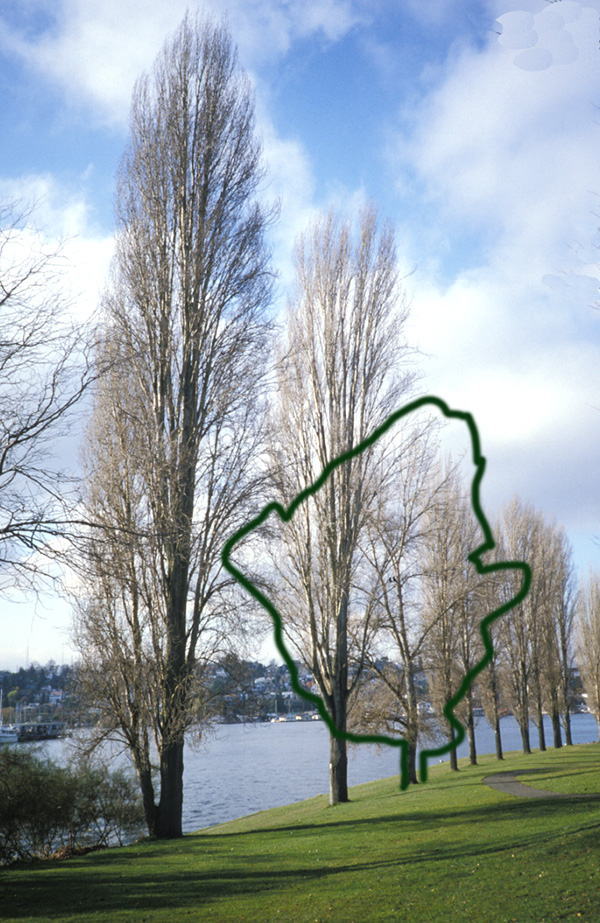
A lone non-narrow Populus nigra in Seattle with Ghost poplars ; very old photo by ALJ
|
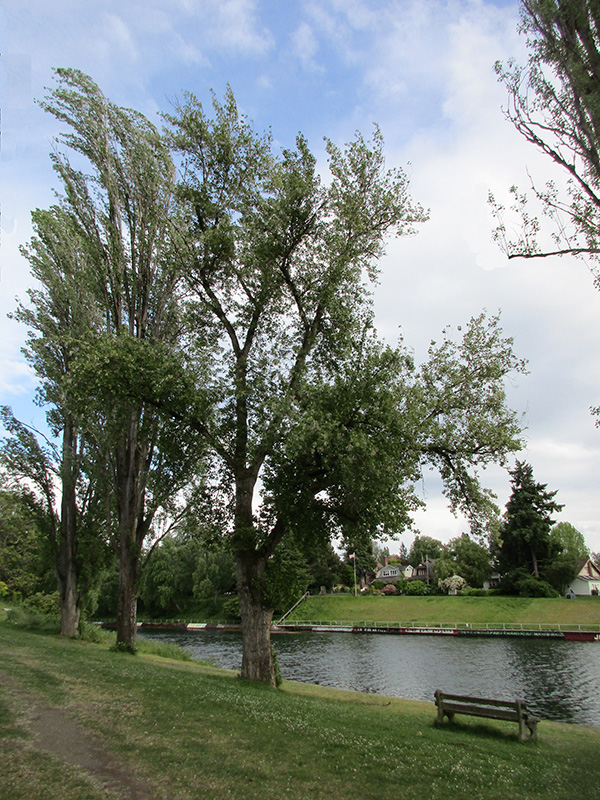
The same tree in June 2021 ; photo by ALJ
|
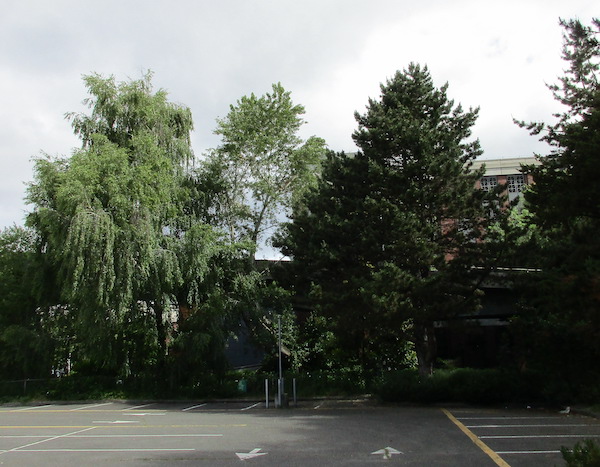
Birch, Black Poplar and Pine ; photo by ALJ
|
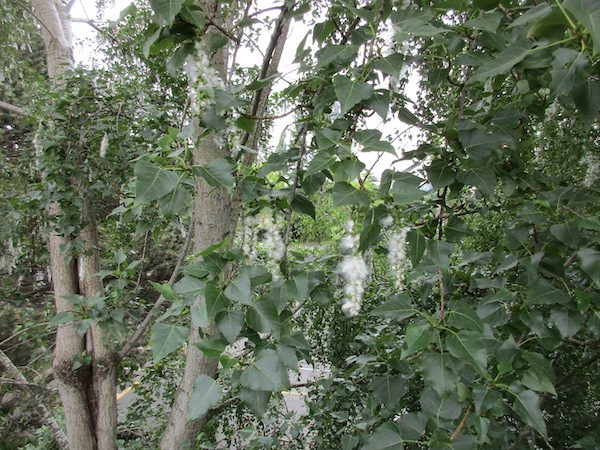
Seeds of Populus nigra ; photo by ALJ
|
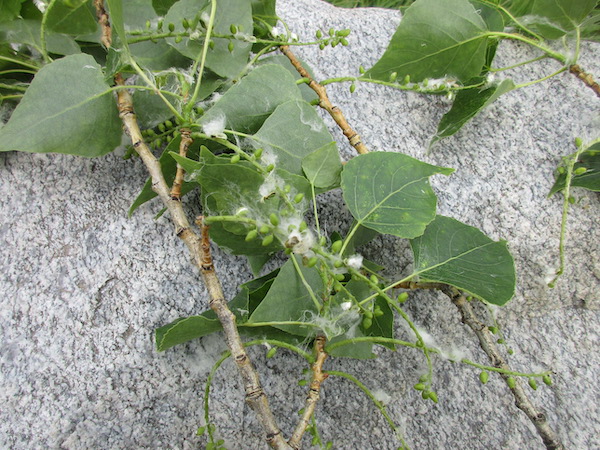
Seeds of Populus nigra ; photo by ALJ
|

